 Your new post is loading...
 Your new post is loading...
Reputation is everything. And on the internet, that couldn't be more true.It's important to always know what people are saying about you -- whether it's your customers, your competitors, or the press. And on any given day, it can be tricky to keep up with what your audience is sharing across a variety of social media platforms. So, we've rounded up some of the best free social media and brand monitoring tools from around the vast web of social networks. Nearly all of these tools are free, but some offer paid versions with more features and capabilities. Let's dive into each one -- and see if you want to test them out today....
But to little old me, a sincere apology goes a long way. When I sense genuine remorse, it means a lot to me -- perhaps because it's so rare, at least in my experience. Combined with my nerdy affection for all things marketing, that sentiment applies to brand apologies, too. It's not so much that I think, "Wow, that means a lot to me," but more like, "Wow, that company really nailed saying, 'Sorry.'" So, who's done it best? We rounded up some of our favorite brand apologies to inspire you next time you make a mistake -- and need to admit your wrongdoing....
We’ve been together for a while now, Marketing Blog readers. I’ve shared stories with you about business school, my surprise revelation that I’m an introvert, and other personal tidbits here and there. Here's one that I hope won't lower your opinion of me: I have a bit of a potty mouth. My first instinct is to apologize for it. But then, I came across new research that shows astrong correlation between cursing and authenticity in character. If only I had known that when I was a rebellious teen and could have retorted, as my colleague Kierran Petersensuggested, "I’m being authentic, Mom!" But it's true -- the study showed a positive connection between profanity and honesty -- on both a micro (individual) and macro (society) level. I've seen real-life examples of this phenomenon. Gary Vaynerchuk -- (in)famous for his profuse utterance of the "F" word in content and public appearances -- has experienced tremendous success as a marketer. And Doug Kessler, creative director of the agency Velocity Partners, has given numerous presentations on the power of swearing in your marketing. So how can this whole thing be executed without risking a loss of respect? And why are we so drawn to it, anyway? We had a look at some example and research, and drew some, er, freakin' conclusions....
All modern American presidents have seen their disapproval rating surpass the 50 percent mark at some stage after taking office. Some reached that milestone faster than others but generally, it took all of them hundreds of days to do so. George Bush senior lasted an impressive 1,336 days before he hit 50 percent disapproval in Gallup's polls while Bill Clinton lasted 573 days before reaching majority disapproval. As a result of the federal debt crisis, Barack Obama passed the 50 percent mark 936 days into his presidency.
Donald Trump has reached majority disapproval in record time, just 8 days. When he entered office, an initial poll from Gallup showed that 45 percent of Americans approved of him, 45 disapproved and 10 percent were undecided. In his first week, he announced construction of the border wall, halted immigration from seven countries, gutted the Affordable Care Act and reversed U.S abortion policy, pushing his disapproval rating to 51 percent, according to a Gallup poll released on January 28....
IAn instant is all it takes to threaten your business's sterling reputation online. You might have had an off day or the misfortune of dealing with an ornery customer, but it's almost inevitable that you'll come face to face with a negative online review at some point in your career. But, as Adrienne Weissman, CMO at G2 Crowd, recently pointed out, negative reviews aren't all bad. Some 70% of Americans read reviews before making a purchase, and those who seek out negative reviews tend to be more engaged and are 67% more likely to make a purchase. Plus, 68% of people trust a company more when their reviews are a mix of good and bad. Of course, the key to making the best of a bad review lies largely in your response. That means you need to be able to find reviews (both good and bad) as they pop up. That's definitely more social media monitoring than one person can handle... And that's where reputation management tools come in. The following five reputation management tools are some of the best on the market for tracking mentions, discovering influencers, and managing online reviews as they happen....
Since 2012, Cohn & Wolfe has studied authenticity as a guiding principle and business practice. Each year, our research reveals more insight on the strategic power of authenticity and its unique opportunity to build reputation.
Cohn & Wolfe has discovered a huge authenticity gap in the eyes of global consumers. With 75 percent of consumers surveyed in 14 markets believing that companies are not open and transparent, it’s clear that brands have a credibility problem.
Our 2016 findings reveal that cynicism towards brands is highest among Western European countries, while high growth / low per capita GDP countries recognize authenticity in brands the most.
Across global markets, approximately one in five consumers finds brands “Open and Honest.” At 23 percent, the US places just above the global average. In Western Europe, a mere 5 percent of consumers in Sweden consider companies “Open and Honest,” while the UK, France, Germany and Spain all match the same low level at 7 percent.
Brazil, while generally higher than Western Europe, is still lower than the US at 19 percent.
Even in China and Indonesia, where consumers are least pessimistic about brand authenticity, only about a third of the population (36 percent and 35 percent, respectively) consider companies “Open and Honest.”
The opportunity for businesses to close this gap is staggering....
People are instinctively drawn to brands that are considered more authentic than their competitors. How can your brand win?Authentic stories help you build emotional connections with customers. But how can you relate your stories back to the target audience?Below are four tactics that can help add a layer of authenticity to your content marketing....
“Many companies are showing greater willingness to take public stances on controversial issues,” said West. “While the vast majority of consumers in our study said they are likely to purchase from companies they agree with, only 3 in 10 have actually done so.
This makes me think consumer behavior hasn’t quite caught up to this new environment in which companies take stands on controversial topics.”
But the risk is evident—and ultimately begs the question: From a company perspective, is it worth it?
“The overwhelming majority of consumers in our study agreed they are more likely to buy from companies they see eye to eye with, and almost half of consumers said they had already stopped buying from a company over a difference of opinion. This tells me that consumers are willing to vote with their dollars,” said West. “But there may be more danger for many companies than opportunity—especially if you serve, as most companies do, a market with diverse political views.”...
The 'Reputation Complex' is a moving combination of various reputational factors, components and drivers that are linked in a close and complicated way. This combination brings with it, for all organizations, equal risks and opportunities – the first to be managed and the second to be exploited in the right manner.
MSLGROUP's SVP and Chief Strategy Officer, Pascal Beculer shares his thoughts on the fast transformation of Reputation Management, everywhere in the world, and what it means for our clients and for us....
Last summer, PR giant Edelman became the focus of negative media attention when it became known that the agency was open to representing so-called "climate deniers." A perception of environmental callousness was furthered when an internal email from Edelman somehow reached the Climate Investigations Center, in which the firm's then-CEO and U.S. president Mark Hass said it was not necessary that he comment on the agency's stance on which clients it will or won't take.
Suddenly, a full-scale attack was launched against Edelman by many media outlets, painting the firm as a greedy organization that prioritized profits over principle. The episode sparked a months-long PR crisis for Edelman (no, the irony was not lost) and involved firm chairman Richard Edelman issuing a statement confirming the agency's commitment to climate-change science, and dismissing Hass. Like most crises, this one passed over—but it was not easily forgotten by the agency....
Australians are increasingly favouring ethical brands, with more than three quarters of respondents to a Havas PR study showing some conscientious consumption. In the past, almost three fifths of respondents reported failing to act conscientiously.
Here’s another one for the bulging “Kids Are Dumb” file: it seems a Florida teenager has cost her father an $80,000 legal settlement with a single, profoundly ill-advised Facebook post.
Patrick Snay, 69, had served as headmaster at a Miami private school called Gulliver Preparatory School until 2010, when his contract wasn’t renewed. Snay sued Gulliver for age discrimination, and in November 2011, the school settled out of court with an agreement to pay Snay $80,000 in damages, $10,000 in back pay, and $60,000 in legal fees. As is often the case, one of the conditions of the settlement was confidentiality, with Snay and his wife promising not to tell anyone about the existence or terms of the deal.
However Snay did tell his daughter Dana, a former student at the school, who now boasted to her 1,200 closest friends on Facebook: “Mama and Papa Snay won the case against Gulliver. Gulliver is now officially paying for my vacation to Europe this summer. SUCK IT.” Gulliver alumni saw the posts and alerted the school’s lawyers, who promptly informed Snay senior the deal was off. He had obviously violated the confidentiality clause....
These six goals can be game changers for businesses and are all attributes that can be reinforced through the strategic use of social media.
One of the most valuable aspects of a solid social media engagement strategy and online presence is having the ability to build trust with consumers.
We have been writing a lot about that recently, whether its in the financial industry, the world of healthcare, or any vertical for that matter.
Authenticity is key, and social media tools and platforms can help companies make authentic connections with their customers if they are used in the right way.
The 2014 Edelman Trust Barometer (from their annual global study) is out now, and it breaks down 16 specific attributes that businesses can improve on to build trust....
|
Late last week I flew United from San Francisco to London. As we got on the plane one of the other passengers gave a box of chocolates to the flight staff as an act of kindness and support for the awful week they’ve had. Nearly 300 stories have been published by the leading news orgs in the US and UK about the incident. Unsurprisingly, our analysis shows sentiment of the coverage is almost exclusively negative. Those stories have earned nearly 1 million shares on Facebook in aggregate. That’s a lot of unwanted exposure for the company. It surpassed United’s trouble with leggings from the previous week about four times over....
But we are entering a new phase of this cultural development. Customers don’t merely want to know where their order is, or where thy can find a good deal. They want to know what we stand for. Mitch Joel writes about this beautifully in hisrecent post: “Brands are willingly (and unwillingly) being pulled into these social media, traditional media and public battles, that are driven by a customer’s values and how they may oppose those of the brands. It’s interesting: the consumer now believes that it’s not about what you sell and the price of it, but what you stand for.“ What’s unique now, is that the brand response is no longer binary. In today’s environment, brands that have quickly/swiftly removed themselves from the situation have often not been applauded, but hurt more for bending and cowering to another side. Brands that have pointed the blame elsewhere (like, say, blame the technology) have been bashed for being so out of touch with how business works these days. Brands that have distanced themselves from influencers that have run amok, are still accused of using them for when it works for the brand, but bailing on them when times get tough (meaning: not authentic). And more....
That was the question I was recently asked by my friend Vivienne Neale. I wasn’t sure how to reply. After all, we all have our “thought leaders” whom we follow. Me, I always wanted to be part of a community where doing meaningful things made belonging matter. Honestly, I don’t consider myself a thought leader. I simply shared my ideas and work because I felt alone in my mission to change the future of business. I’ve always believed I couldn’t do it alone. I, we, needed one another to learn, unlearn, grow and change.
I once said that becoming a thought leader is about YOU being inspired to do something that helps someone else....
Scholars in public relations have contended that organization-public relationship (OPR) quality has multiple dimensions, including the oft-cited list of trust, satisfaction, control mutuality, and commitment. The concept of OPR quality is assumed to be positive (Heath, 2013), which nevertheless does not describe relational problems in reality. In this blog post, I introduce an additional side of OPR quality—distrust, and how it differs from trust. Distrust is often considered as simply the opposite of trust by organizational researchers and excluded as a component of OPR quality in the public relations literature. However, distrust is not the absence of trust. For example, an employee may have both low levels of trust and distrust in his or her colleagues who resemble casual acquaintances in the organization. They only occasionally cross paths with these coworkers. They are not confident in or very watchful of these relational partners. Also likely the employee could feel both high levels of trust and distrust in his or her superiors. They trust the management, as representatives of the organization, in some aspects but distrust in other aspects. In an employee survey (N=583), I tested distrust as a new dimension of OPR quality (Shen, in press). I found that both distrust and trust were distinct from each other. The study suggested that OPR quality is not inherently positive. Employees may perceive sinister intentions of the organization’s conduct. Even those who highly trust their employing organizations do not necessarily perceive low distrust, and vice versa. Employees could feel confident about the organization’s capabilities—trust, while at the same time they are skeptical about whether the organization keep employees’ interests in mind when making decisions—distrust....
So people don’t trust brands – but what does that MEAN?
That they think you’re overcharging them?
That they’re worried you’ll lose their credit card information to hackers?
That they wouldn’t ask you to watch their cocker spaniel for the afternoon?
Mistrust comes from a disconnect between what you say and what you do.
A whopping 78% of people think that in general, brands are NOT open and honest. In fact, only 1 in 4 people thinks that brands actually do what they say they’re going to do – a level of mistrust typically reserved for badly behaved toddlers and black market organ dealers.
This doesn’t mean you or your business have necessarily made people feel misled – but it means you still have to work a lot harder to make up for the damaged caused by brands in general....
This year’s Trust Barometer shows something amazing. The biggest increase in trust hasn’t been in the media or NGOs or the government… it’s been in the private sector.
The general public wants businesses to lead the way when it comes to societal issues. More specifically… Edelman says the data shows people want CEOs to be more visible.
They want to know the person leading a business. They want to know their values and where they stand on social issues....
No matter how on message anyone is, there still may be a difference between what a company or brand says about itself and its reputation, and what consumers say about them. FleishmanHillard calls this the “authenticity gap.”
Every year, the company uses research and data to see which companies are on the right track, and whether they are focused on the things that matter most to the audiences that are most important to them. Last month, a group gathered in Toronto to discuss the authenticity gap and how it applies to them. Below is a broad overview from Nick Drew, FleishmanHillard’s Canadian head of research, of the data turned up in 2015....
What’s in it for them?” is, perhaps, the most important question that you can ask yourself before you enter into cause-related business (or any business, for that matter). So often, marketers know a ridiculous amount about their product, their points of differentiation, their mission or even their cause, yet when asked about their customer, they run out of things to say rather quickly.
The secret to fostering engagement with your customers lies in knowing what they are really buying from you. If you want your business to do good, it better be the kind of good that people care about. People save the cute and cuddly animals first. Baby fur seals and koalas are far easier to rescue than the blowfish. This is not to diminish the importance of any cause, but if we fail to be honest about the way that consumers buy and buy in, then we fail to understand the nature of “good” in business....
Within the last couple of years, you are now starting to see actual companies sharing their revenue numbers and many other things (likeemployee’s salaries). Often times, these sorts of posts are the most read. It attracts readers of all kinds, not necessari,ly just potential customers.
Some of the companies doing this are venture backed, and some are bootstrapped. It’s what makes them fun to read. You see a diversity of tactics and strategies being implemented based on what stage they are in.Here is a list of companies providing regular revenue reports that are worth the read, along with a quote from their founders about why they do it....
No, we're not talking about Apple or Amazon or Big Data or the Marketing Cloud or Programmatic Buying.
Chevy’s Rikk Wilde “looked down at his notes often, spoke haltingly and explained to the pitcher that he'd like the Colorado” —Marketing Daily’s Karl Greenberg has the skinny today on its new “inner truck guy” conventional campaign — “because it has ‘class-winning and leading, you know, technology and stuff,’” James R. Healey reports in USA Today.
“The nervous Wilde was assured this morning he still has a job,” Greg Gardner and Alisa Priddle reported in the Detroit Free Press last evening. “And in fact he appears to have garnered millions in free publicity for the Chevrolet brand, which has received at least $2.4 million in media exposure from the unconventional presentation, according to Front Row Analytics. Bloomberg reports that is six times more than the $392,000 it would have brought in with a more polished performance.
”It did not take long for #technologyandstuff to pop up on Twitter with GM president North America Mark Reuss (@GMdudeinNA posting, “It's what I've been saying for years.....#technologyandstuff,” Gardner and Priddle report....
Social media thought leadership requires both direct and indirect tactics. Using your own social media channels is your direct reach. It is limited by the quality and size of your audiences on each of the social networks you use and how attentive your audiences are to your posts. You can improve attentiveness by being interesting, engaging and useful, but there are limits to what you can do with direct outreach here.
It is via indirect channels that you truly become a thought leader. When people share your posts with their networks, when they seek you out for answers to their questions and when they start talking about your ideas without even mentioning you, that is what thought leadership has become.
When the press retweet you; when experts and policymakers follow you and incorporate your ideas into their work; when these things happen to you, you are a thought leader....
It's the golden rule and the core of all communications etiquette: If you can't say something nice, don't say anything. On Tuesday, Kelly Blazek, who runs the Cleveland Job Bank, learned that lesson the hard way when her email smackdown of a young job seeker named Diana Mekota, who contacted her through LinkedIn, went viral.
"Love the sense of entitlement in your generation. And therefore I enjoy denying your invite," read Blazek's poison pen letter, in part. "You're welcome for your humility lesson of the year. Don't ever reach out to senior practitioners again and assume their carefully curated list of connections is available to you, just because you want to build your network."
Mekota posted the complete email on Reddit, Imgur, and Facebook, along with these comments: "Guess us twenty somethings should bow down to senior professional because clearly we have nothing to offer," and "Let's call this lady out." From there, it was like a torch thrown into a desert of parched tumbleweeds...
|



 Your new post is loading...
Your new post is loading...





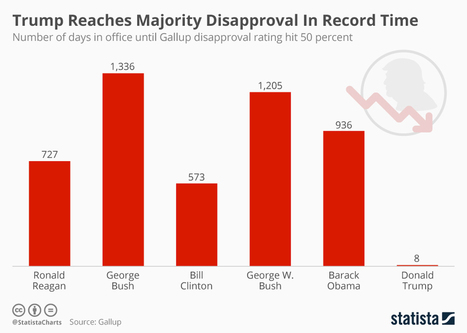


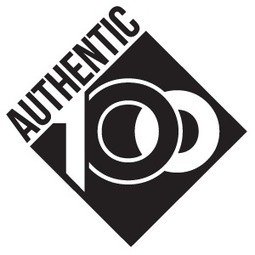

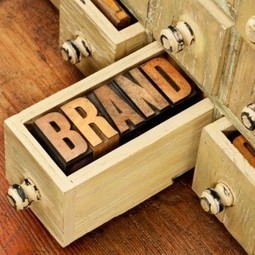






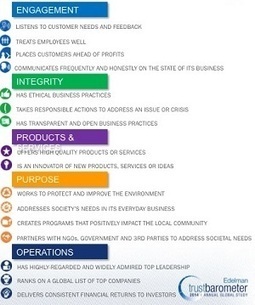


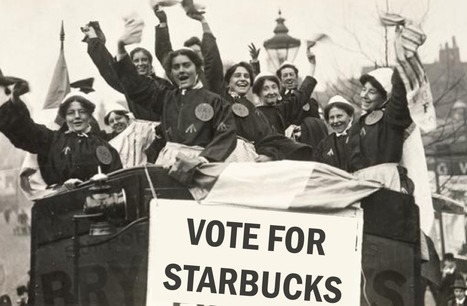
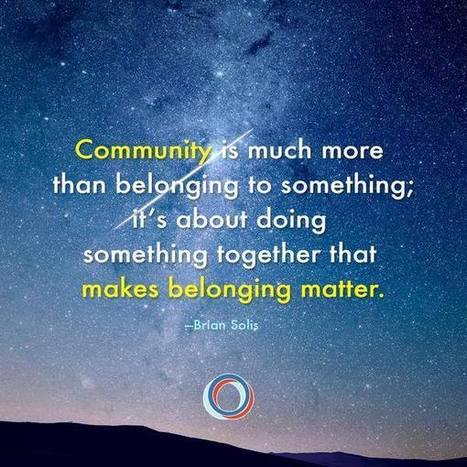



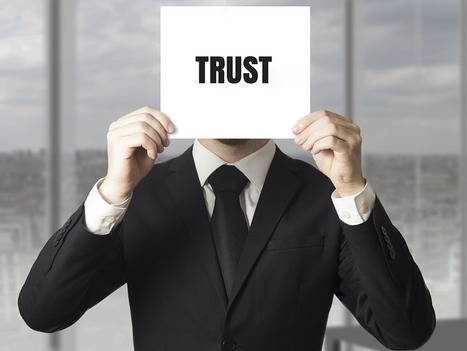
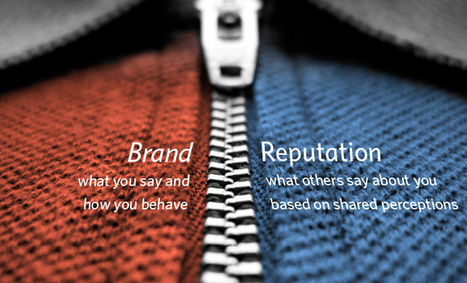




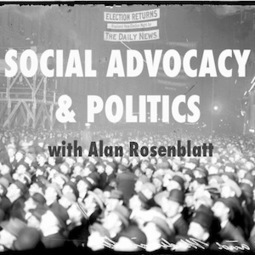
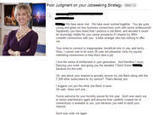







Check out these free social media and brand monitoring tools to take your social game to the next level.